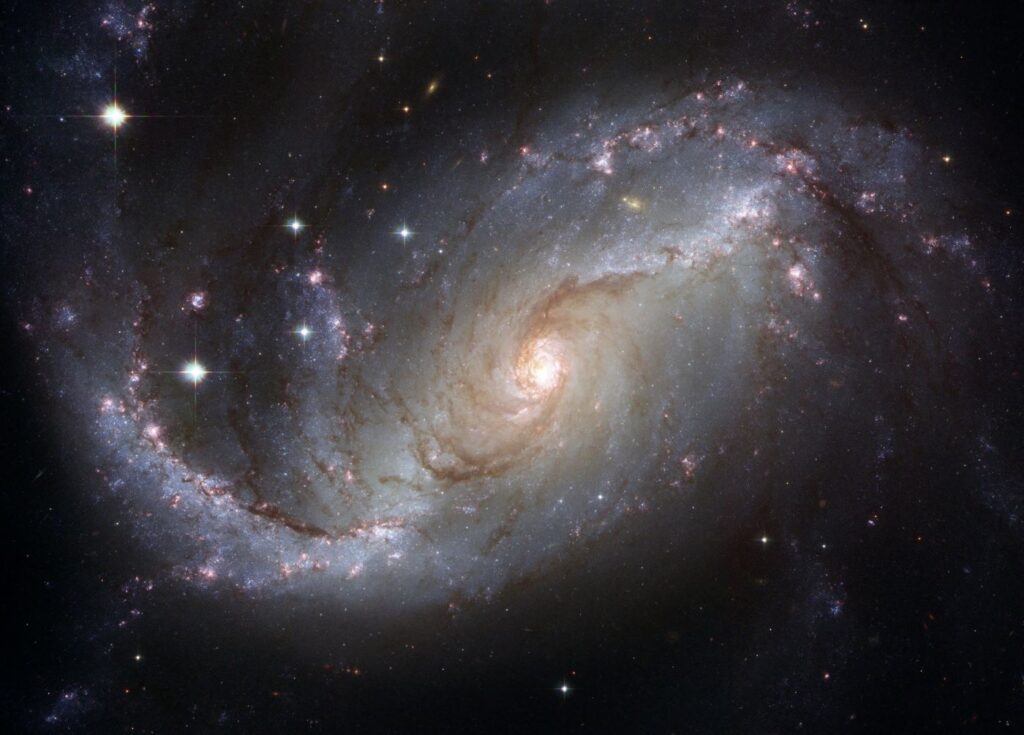Reading Nicholas Spencer’s Magisteria: The Entangled Histories of Science and Religion, I was reminded of T. S. Eliot’s words: “We shall not cease from exploration, and the end of all our exploring will be to arrive where we started and know the place for the first time.” For all the intense debates about how best to navigate the territories of science and religion, this is a journey that points back to its origin: the human person. As Spencer convincingly demonstrates, what we think about science and religion often says more about us—our views on what it means to be human and who gets to decide—than it does about science and religion.
The book’s title refers to the biologist Stephen Jay Gould’s model of science and religion as “non-overlapping magisteria,” or two distinct activities that need not interact. Others have variously defined the relationship in terms of conflict, dialogue, or collaboration. Spencer rejects such approaches as too simplistic. In line with the emerging scholarly consensus that there isn’t a single narrative for the history of science and religion, he offers alternative histories. After all, the two enterprises turn out to be “indistinct, sprawling, untidy, and endlessly and fascinatingly entangled.”
But Spencer’s goal isn’t just to emphasize complexity. In his telling, the histories of science and religion tend to converge on two issues: human nature (our origins, purpose, and uniqueness) and authority (who has the right to adjudicate these questions?). Perhaps this is why the topic of science and religion can be so polarizing: if Spencer is correct, we’re dealing not with sterile abstractions about “conflict” or “harmony,” but with profoundly human concerns about who we are, how we relate to each other, and what we might be.
While the story of science and religion is not so easy to track, Spencer’s own career trajectory has been heading toward an ambitious study of the subject for some time. As a senior fellow of the Christian think-tank Theos, he has already written a book about Charles Darwin’s religious beliefs, another on The Evolution of the West, and presented a BBC radio series on the relationship between science and religion. With Magisteria, he has now produced one of the most comprehensive and compelling popular accounts of the entanglements between these contested human activities.
Start your day with Public Discourse
Sign up and get our daily essays sent straight to your inbox.Spencer’s goal isn’t just to emphasize complexity. In his telling, the histories of science and religion tend to converge on two issues: human nature (our origins, purpose, and uniqueness) and authority (who has the right to adjudicate these questions?).
Histories
The book’s historical scope is vast, with the first section alone tracing 1,600 years of (general) cooperation and (occasional) combat between science and religion. Spencer shows that, to a considerable degree, ancient and medieval religious believers supported, legitimized, and helped advance scientific inquiry. Augustine warned that it is “disgraceful and dangerous” for Christians to ignore facts about the physical world. Islamic scholars made original contributions to astronomy, chemistry, and medicine. Christian ideas about the order and rationality of the natural world informed the assumptions that continue to underpin science today. Medieval universities functioned primarily as scientific institutions.
Of course, the terms “science” and “religion” (as well as “science and religion”) are modern inventions, and Spencer acknowledges the risk of anachronism when using them in relation to the ancient and medieval worlds. His point is that, for large parts of human history, what we would now compartmentalize as scientific and religious outlooks were fully integrated in the lives of important figures. The twelfth-century scholastic philosopher Robert Grosseteste combined scientific work with an ecclesiastical career. The fifteenth-century philosopher Nicholas of Cusa was a Catholic cardinal as well as a mathematician and astronomer. Both men believed that God’s creation was subject to quantification and experimentation, and both engaged with ideas (such as the concept of infinity) that would sit easily with developments in twenty-first-century physics.
The book’s other three sections are framed by three major incidents in the history of science and religion, which Spencer sees as central to sustaining the popular myth of endless conflict: the Galileo affair, which seemed to pit Copernicus’s heliocentrism against the Catholic Church; the Huxley–Wilberforce debate, which seemed to pit Darwin’s new theory of evolution against Christian belief in Victorian England; and the Scopes Monkey trial, which seemed to perform a similar role in Tennessee sixty-five years later.
In each case, Spencer complicates the familiar narrative of scientific advancement sweeping away religious superstition. Galileo’s trial was as much about personality clashes, political considerations, and broader religious upheaval as it was about heliocentrism, which senior Church figures initially received warmly. The Huxley–Wilberforce debate had little public impact until decades later, and it wasn’t narrowly focused on evolution, which Darwin did not in any event view as incompatible with theism. The Scopes trial, according to one of the defense lawyers, was not just about science and religion, but about science and the idiosyncratic populism of William Jennings Bryan, who led the prosecution.
Beyond historical myth-busting, Spencer notes that all three incidents raise questions about who we are and who gets to say. Copernicus threatened our central position in the cosmos, while Galileo challenged the Church’s authority. Darwin threatened our central position in the natural world, while Thomas Henry Huxley, a new breed of professional scientist, challenged the authority of church leaders like William Wilberforce. Bryan argued that parents and not politicians should have the authority to determine what children are taught in schools.
In this sense, Spencer’s book suggests that the supposedly epic clashes between science and religion tell us more about ourselves and our cultural and political battles than they do about scientific inquiry or religious belief. It’s no coincidence that the narrative of conflict between science and religion emerged in the late nineteenth century just as science was establishing, professionalizing, and seeking cultural territory for itself in Victorian society. Then and now, the conflict narrative is a function of society’s need to legitimize the status and significance of science. In America today, science (or some version of it) has displaced religion as the approved elite ideology: “In this house, we believe science is real …”
Then and now, the conflict narrative is a function of society’s need to legitimize the status and significance of science.
Misconceptions
Though our modern culture likes to think of itself as scientific, Spencer’s book reminds us that public understanding of science, even among its own practitioners, can be limited. Without a clear sense of the historical and philosophical foundations of science, many people will default to mistaken or incomplete views about how it relates to religion. In my experience of teaching at universities in the U.S. and the UK, I’ve noticed three common misconceptions about science, each of which arises repeatedly in Spencer’s account.
First, the scientific method (observation and experimentation) is highly effective at describing the physical world, but ethical, metaphysical, and theological questions fall outside its empirical scope. As Spencer notes, “those who think science can judge definitively on the God question are getting their physics and metaphysics muddled up.” Science is also not a substitute for politics. It may or may not be a good idea to restrict access to schools and workplaces during a pandemic, but this is a complicated political question that calls for leadership, discernment, and wisdom. “Follow the science” is a neat statement of the intellectual confusion that arises when science is assumed to be all-knowing.
Second, despite its cultural dominance today, science remains a fragile enterprise. In its early forms, as Spencer explains, it was practiced and protected by religious believers and institutions. Today, science still requires significant support, both financially (to provide for training, laboratories, and equipment) and politically (to deliver the government subsidies, intellectual property protection, and international cooperation on which it depends). Perhaps it is because of science’s fragility that its most strident advocates feel the need to distinguish it sharply from other modes of truth, particularly religion.
Third, as Spencer’s book illustrates, science is a process—provisional, unpredictable, and always subject to revisions and revolutions. It is fashionable to view it as a unified, dominant force, sweeping away religious and philosophical distractions. In reality, scientists make errors, entertain doubts, stumble accidentally on fresh insights, and hold messy, contradictory views. For these reasons, a sense of humility and a recognition of intellectual limitations should be central to the scientific pursuit of knowledge.
As Spencer’s book illustrates, science is a process—provisional, unpredictable, and always subject to revisions and revolutions. It is fashionable to view it as a unified, dominant force, sweeping away religious and philosophical distractions. In reality, scientists make errors, entertain doubts, stumble accidentally upon fresh insights, and hold messy, contradictory views.
Entanglements
I mentioned that Spencer has presented a series on science and religion for the BBC, which (in theory at least) imposes an editorial style of impartiality and detachment. This spirit pervades the book, as he mostly steps back and presents his findings in a judicious and evenhanded way. While I appreciate his desire to offer a balanced account with the broadest possible appeal, his knowledge and passion for the subject are so evident that, at times, I hoped he would impose himself more on the material.
For example, the book concludes somewhat abruptly with a discussion of artificial intelligence and religious belief, which is informed and lively (an excerpt is available here), but we are left with no final reflections. What are Spencer’s expectations for the future of this entangled relationship? How might it unfold across different countries and cultures? How would he encourage mutual understanding between science and religion in the years ahead? Having provided such a rich historical guide, it seems he missed an opportunity not to say more about the road (or roads) ahead.
I also wonder if entanglement is the most fitting model to convey Spencer’s thesis. Washington famously warned against foreign entanglements, and the term is usually meant negatively. Entanglements are confusing, damaging, and something to be avoided. But Spencer shows that science and religion have often coexisted and collaborated productively. Ironically, in seeking to transcend the adversarial dialectic that has governed this conversation, he has settled on a theme associated with conflict. Entanglement also requires distinct entities to be entangled, but the boundaries between science and religion are far from clear, and may not even meaningfully exist.
But these are minor objections. Overall, Spencer’s book is based on deep historical insight and research, it is written with elegance and energy, and it achieves the rare feat of being scholarly and serious as well as accessible and engaging. It will be an important resource for anyone who wishes to understand the scientific and religious entanglements that have shaped, and continue to frame, our views of God, humanity, and the cosmos.
Image license courtesy of pexels.com.














